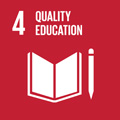- Docente: Guglielmo Gabbiadini
- Credits: 9
- SSD: L-LIN/13
- Language: Italian
- Teaching Mode: Traditional lectures
- Campus: Bologna
-
Corso:
First cycle degree programme (L) in
Foreign Languages and Literature (cod. 6602)
Also valid for First cycle degree programme (L) in Foreign Languages and Literature (cod. 0979)
First cycle degree programme (L) in Humanities (cod. 8850)
-
from Feb 10, 2026 to May 08, 2026
Learning outcomes
At the end of the course students should know the general outline of literary history. They should be able to read, understand and translate texts from German into Italian and they should also be acquainted with the methods and analytical tools they need to interpret the works of the main authors, contextualising them within their cultural and historical period.
Course contents
Begegnungen, encounters: a journey through 20th-century German-language literature
We are here invited to embark on a journey through 20th-century German-language literature, with a brief foray into contemporary works. Through the reading of representative texts, the course aims to provide an introduction to the study of the literary history of the period above mentioned. We will especially focus on remarkable pieces of narrative prose: novellas, tales, novels, fragments and legends… all short or, indeed, very short stories that may possibly help us to make sense of major changes in history by retracing the singular experiences of their characters. The theme of the «encounter» has served as a starting point when selecting the readings.
Readings/Bibliography
Primary texts, recommended editions
Please see also below ('Assessment methods')
- Thomas Mann, Der Tod in Venedig / La morte a Venezia, a cura di Elisabeth Galvan, con testo a fronte, Venezia, Marsilio, 2009 (if not available: Thomas Mann, La morte a Venezia, traduzione di Emilio Castellani riveduta da Renata Colorni, con Introduzione di Elisabeth Galvan, in Thomas Mann, La montagna magica con La morte a Venezia, Milano, Arnoldo Mondadori Editore, 2010, p. 1373-1483 oppure Thomas Mann, La morte a Venezia, traduzione di Anita Rho, Torino, Einaudi, 2015)
- Annemarie Schwarzenbach, Eine Frau zu sehen, Zürich, Kein & Aber, 2020; It. translation by Tina D’Agostini, Ogni cosa è da lei illuminata, postfazione di Alexis Schwarzenbach, Milano, Il Saggiatore, 2012 (or later editions)
- Alfred Andersch, Der Vater eines Mörders. Eine Schulgeschichte, Zürich, Diogenes, 1980 (o edizioni successive); It. translation by Amina Pandolfi, Il padre di un assassino, Parma, Guanda, 1990 (or later editions)
- Ilse Aichinger, «Spiegelgeschichte», in Ead., Der Gefesselte. Erzählungen I (1948-1952), Frankfurt am Main, S. Fischer, 1991, pp. 63-75; It. translation by Floriana Colabattista, «Storia allo specchio», in Studia austriaca – Ilse Aichinger, ed. Elena Agazzi, Fausto Cercignani, 1996, p. 125-139
- Peter Bichsel, Eigentlich möchte Frau Blum den Milchmann kennenlernen. 21 Geschichten, Olten-Freiburg, Walter, 1964 (o altre edizioni);It. translation In fondo alla signora Blum piacerebbe conoscere il lattaio, prefazione di Chiara Allegra, Milano, Marcos y Marcos, 1991
- Christa Wolf, Kein Ort. Nirgends, Hamburg-Zürich, Luchterhand, 1981 (or later editions); It. translation by Maria Grazia Cocconi e Jan-Michael Sobottka, postfazione di Anita Raja, Nessun luogo. Da nessuna parte, Roma, Edizioni E/O, 1997 (or later editions)
- Rafik Schami, «Erinnerst du dich?» / «Ti ricordi?», in Id., Eine deutsche Leidenschaft namens Nudelsalat und andere seltsame Geschichten / Una passione tedesca chiamata... insalata di pasta! E altre storie bizzarre, a cura di Raul Calzoni, traduzione italiana di Raul Calzoni e Valeria Morelli, Milano-Udine, Mimesis, 2021, p. 28-48
- Günter Grass, Figurenstehen. Eine Legende, Göttingen, Steidl, 2022; It. translation by Nicoletta Giacon, Statue viventi. Una leggenda, con i disegni dell'autore, Milano, La nave di Teseo, 2024
The list is open and in progress
Literary History:
(Further information regarding the pages will be implemented as soon as possible)
- Raul Calzoni, La letteratura tedesca del secondo dopoguerra. L’età delle macerie e della ricostruzione (1945-1961), second edition, Roma, Carocci, 2018
- Raul Calzoni, La letteratura tedesca contemporanea. L’età della divisione e della riunificazione, second edition, Roma, Carocci, 2018
- Marco Castellari, «L’immediato dopoguerra 1945-1949», in Chiara M. Buglioni, Marco Castellari, Alessandra Goggio, Moira Paleari, Letteratura tedesca. Epoche, generi, intersezioni, vol. 2: Dal primo dopoguerra al nuovo millennio, Firenze, Le Monnier, 2019
- Luca Crescenzi, Letteratura tedesca: secoli ed epoche, Roma, Carocci, 2005
- Michael Dallapiazza e Claudio Santi, Storia della letteratura tedesca, vol. 3: Il Novecento, fourth edition, Bari-Roma, Laterza, 2018
- Francesco Fiorentino, La letteratura della Svizzera tedesca, Roma, Carocci, 2001
- Marino Freschi, La letteratura tedesca, Bologna, il Mulino, 2008
- Aldo Venturelli, L'età del moderno. La letteratura tedesca del primo Novecento (1900-1933), second edition, Roma, Carocci, 2017
Teaching methods
The course includes lectures and seminars. Students are encouraged to participate actively in the discussions.
Students with SLD or temporary or permanent disabilities: it is suggested that they get in touch with the relevant University office (https://site.unibo.it/studenti-con-disabilita-e-dsa/en) and with the lecturer in order to seek together the most effective strategies for following the lessons and/or preparing for the examination.
Course contents and exam mode of completion are the same for students who do not follow lessons, are on Erasmus exchange etc. For mentoring service you may arrange an appointment (guglielmo.gabbiadini@unibo.it)
Assessment methods
Oral exam – questions aimed at assessing:
- the acquisition of the contents presented in class. Students taking the 6-credit exam (13298) are not required to prepare the section on contemporary literature
- the knowledge of at least two of the primary texts (at least one for students taking the 6-credit exam) that each student is expected to read in full length in German (see above). The exam will begin with these readings as a free subject of discussion (‘Einsprechthema’)
- the development of critical thinking skills
Final grading on a 30-point scale (0-17=fail).
Teaching tools
Multimedia
Office hours
See the website of Guglielmo Gabbiadini
SDGs

This teaching activity contributes to the achievement of the Sustainable Development Goals of the UN 2030 Agenda.
